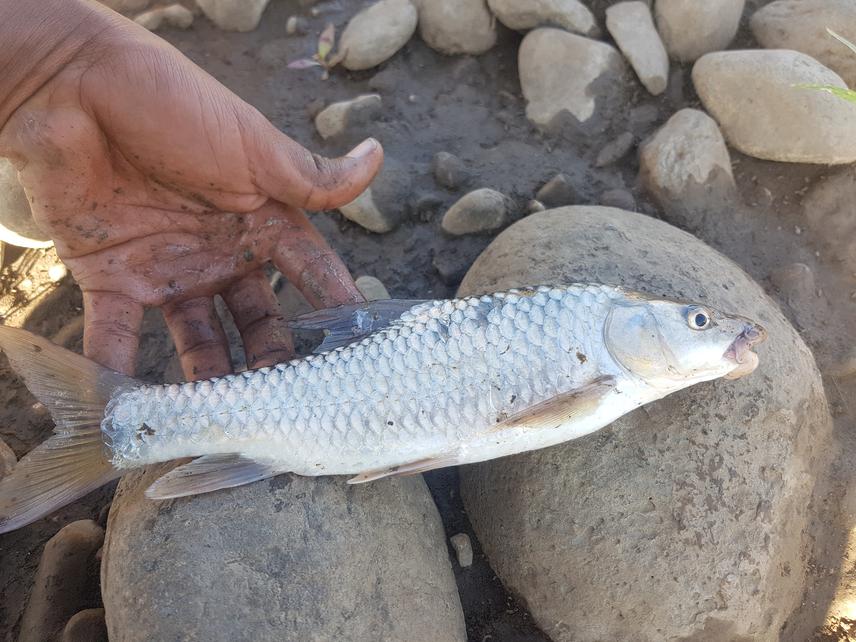Gizachew Teshome Ayele
Lake Tana is one of the worldwide top 250 lakes for biological diversity conservation. In 2015, UNESCO has registered it as a world biosphere reserve for its rich biological and cultural diversity. Lake Tana and its tributaries contain the last remaining ‘species flock of cyprinid fishes globally’ (de Graaf et al., 2004; Palstra et al., 2004). However, most of the endemic Labeobarbus species are threatened due to anthropogenic pressures such as surface water pollution, irrigation dams/weirs, sand mining, and agriculture.

Labeobarbus nedgia sampled in Megech River.
Therefore, due to limited information on the potential impacts of environmental degradation on migratory Labeobarbus species distribution pattern, this study aims to investigate the current state of the spatiotemporal distribution of threatened Labeobarbus species linked to environmental degradation. Appropriate conservation measures will be identified which helps to implement different in-situ conservations. Fish and water samples will be taken at various sites along a gradient of environmental parameters, anthropogenic pressures, and reference sites. It will be used to show the distribution pattern of fish along gradients of key environmental variables that we predict will have a relationship with fish populations and assemblages in the study area.